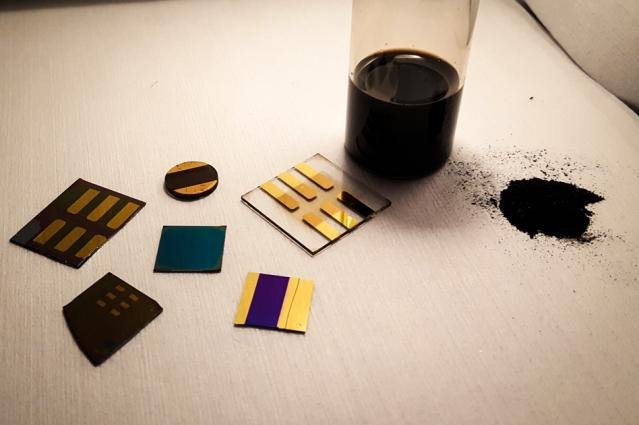Researchers at MIT used thin films formed from coal powder solutions to create electronic components. Photo by Jeffrey Grossman/MIT News
BOSTON, April 19 (UPI) -- Researchers at MIT have successfully created electronics components out of coal. Their findings are proof that the natural resource is more than just a fuel source.
"When you look at coal as a material, and not just as something to burn, the chemistry is extremely rich," Jeffrey Grossman, a material scientist at MIT, told MIT News.
In their initial investigation into coal's functional chemistry, Grossman and his colleagues determined that unprocessed, natural coal varieties offer an impressive range of electrical conductivities. In other words, it is versatile enough to meet a variety of needs in electronics manufacturing.
The question was how best to process the mineral.
Grossman decided to fabricate thin films by grinding coal into a powder and mixing it into a solution before allowing it to solidify on a substrate.
Traditionally, coal is looked at by material scientists and industrial chemists as purely a raw material -- something to broken down to the atomic level for use in creating new chemicals and materials.
But the latest research suggests coal has inherent chemical properties useful to electronic engineers.
By adjusting the temperature at which the coal was processed, Grossman and his research partners found that they could manipulate the material's properties for specific electronic purposes.
The adjustability of its electronic and optical properties, combined with its high conductivity, thermal stability and robustness, make it a promising material. It's also relatively cheap to fabricate.
Now, researchers need to determine how to best scale up the production process and begin testing a wider array of electronic components made from coal films.
Grossman and his colleagues recently described their experiments with coal films in the journal Nano Letters.















